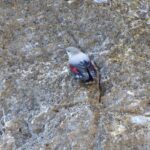Tour Winter Birding Break in Catalonia, 2018 issue
Dates: 13th to 16th February, 2018
Number of participants: 5
2019 dates: February 19th to 23rd. Join for great birding and good fun!
Day 1. February 13th
We start our tour by picking up the tour participants from their hotel and about 7:45 we were already out of the city. This time the first destination was the farmland plain of Llobregat Delta. This worked really well and it was done to allow some clients to join the trip as they were landing in Barcelona minutes before 9:00.
So, after a fast coffee we went out to have some birds. Temperature was 10ºC with clear sky. We explored a farming area extremely close to the airport combining small fields and patches of decidious forest. We soon had the first flocks of finches of the trip. Mainly Common Chaffinches (Fringilla coelebs), Eurasian Goldfinches (Carduelis carduelis) and Eurasian Greenfinches (Chloris chloris) but also several European Serins (Serinus serinus) feeding on ground. Our quest bird for the site was Iberian Green Woodpecker (Picus sharpei), a recently split species from European Green Woodpecker being endemic of the Iberian Peninsula.
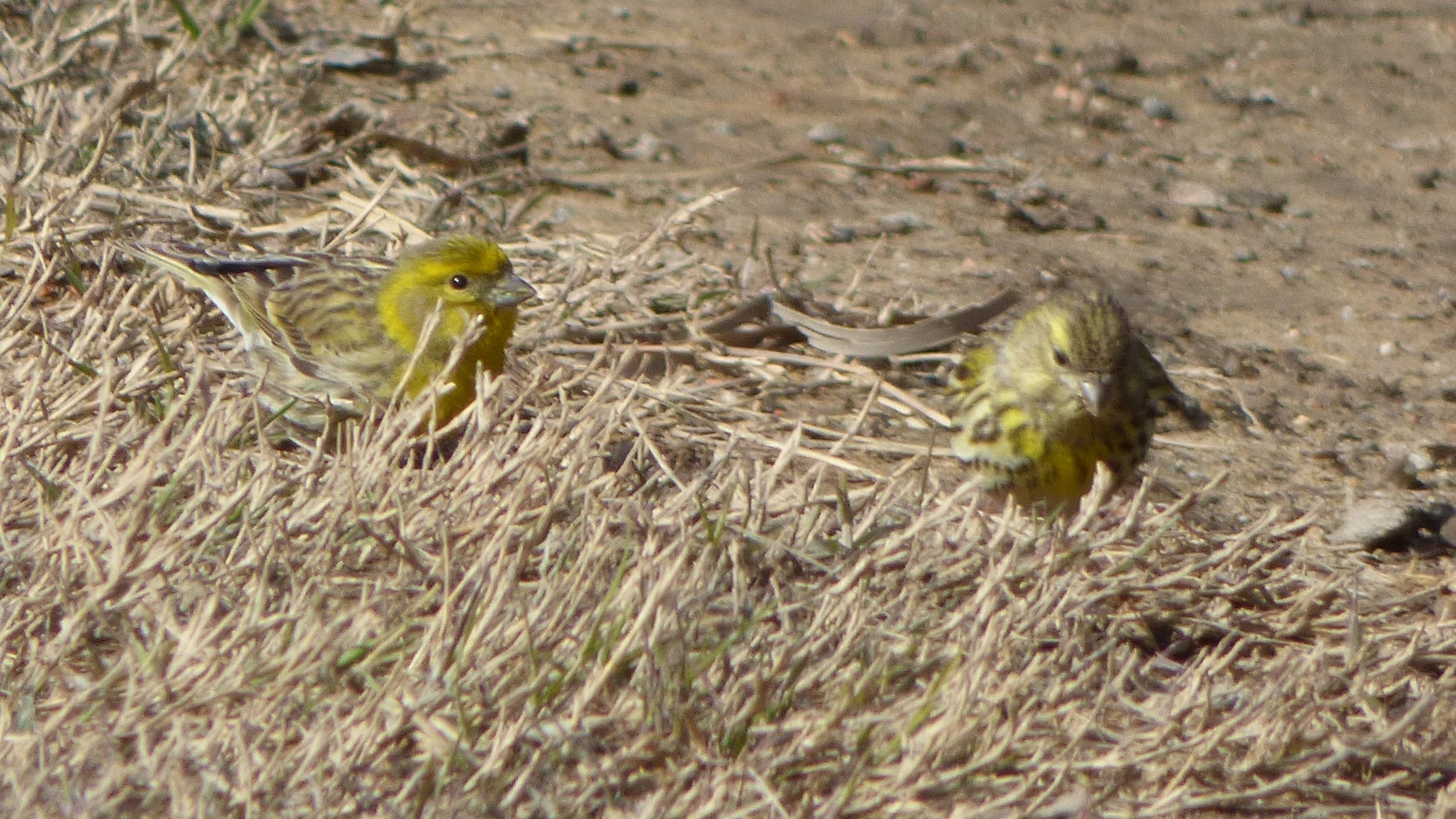
We soon had some birds calling around and it was not long until we got nice views on one individual perched in a tree for long. That was a really nice view followed for 2 more birds flying around and interacting.
The fields kept producing good birding as there were several Black Redstarts (Phoenicurus ochruros) and some Sardinian Warblers (Sylvia melanocephala) moving around. Also Common Chiffchaffs (Phylloscopus collybita) and the firsts of many Crested Larks (Galerida cristata) of the trip were appearing.
While moving in the area we had a distant male Hawfinch (Coccothraustes coccothraustes) perched in the top of a tree while some Eurasian Siskins (Carduelis spinus) flew over us with no change for a proper view. Was time to go to the airport but we still had time to enjoy 3-4 Hoopoes (Upupa epops) feeding on the ground and we could enjoy how the birds were digging on the sandy soil while looking for warms and small insects.
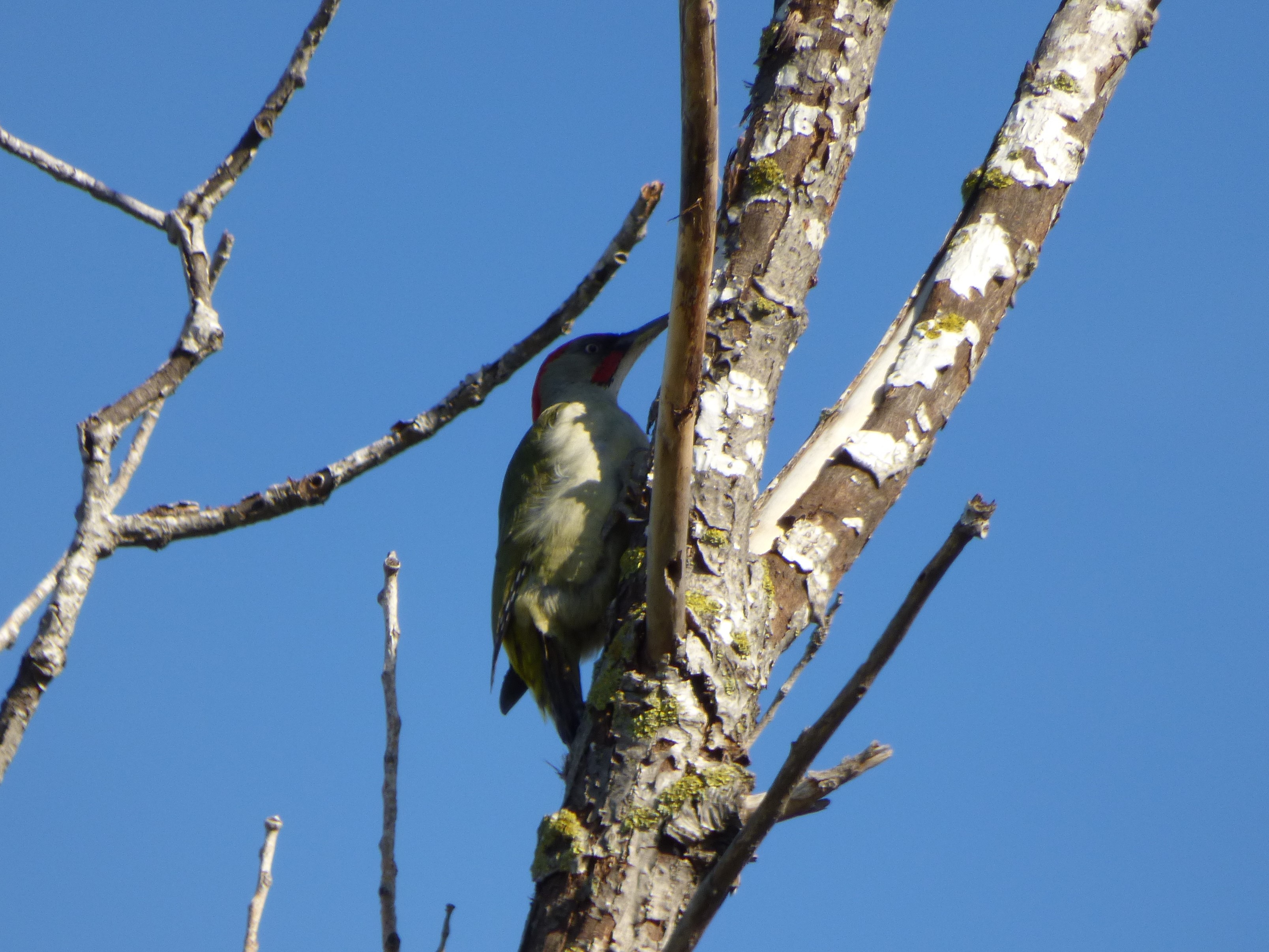
Hoopoes are mainly summer visitors in Catalonia but in the last 20 years more and more birds are staying all year round. Now, in Llobregat Delta, there are a pair of winter roosting places and they normally move in small flocks at the beggining of the day.
Soon after one of the members of the trip had 2 Red-legged Partridges (Alectoris rufa) and the whole group enjoyed the birds. That was a really good start of the trip but now was time to pick up the rest of participants and go up to the Pyrenees.
After a two hours long transfer from the coast we arrived to Catalan Pyrenees to explore the high mountain slopes. That afternoon we were cofused in a mountain pass about 2000 metres high to look for the main targets of that day; Snow Finch and Alpine Accentor. Weather was still okay but it was broadcasted a huge weather change for the afternoon including heavy snow and Siberian-like temperatures, and the extremely dark cloudes coming from our left were the prove that the broadcast was right, this time. So, we were not having a lot of time, probably 2 hours or so…
After some exploratory stops we just decided to walk a bit along the lonely road. Both species use to move in flocks in winter and the size of the flocks can be really variable, from 2-3 birds to 100 of them! We were lucky this time and didn’t have to wait much until we found some birds moving in the open, grassy slope. It was a small flock of 4 Alpine Accentors (Prunella collaris) feeding in the slope! We walked a bit up, and enjoyed extremelly close views on the birds that produced really good images! Unfortunately it was no signal of Snow Finches, which may be appearing along with Alpine Accentors, sometimes.

Back to road we decided to keep exploring up the road. Weather was getting much and much worst and we were having some Snow and wind. A new stop some half a quilometre beyond produced lovely views in a herd of Pyrenean Chamoises (Rupicabra pyrenaica) while enjoying with the calls and moviments of a small flock of Red-billed Choughs (Pyrrhocorax pyrrhocorax). Here we also enjoyed the first raptor of the trip: a juvenile Lammergeier (Gypaetos barbatus)! The bird just appeared at the other side of the valley and we all had its majestic flight for some time before it became difficult to track due to the falling snow…
Lammergeiers are nesting not far from the place and a mininum of two juveniles plus the adults are likely to move in these slopes, and this despite the density of the bird is lower than in other areas of the Catalan Pyrenees!
Out of a pair of small flocks of Mistle Thrush (Turdus viscivorus) and 1 or 2 Fieldfares (Turdus pilaris) there was not much other activity in the mountain pass as the weather was turning really bad so we decided to start going down, always really slow to allow some scan around and try to get something else! And we got something else…. Suddenly, a big flock of about 80 Snow Finches (Montifringilla nivalis) came down from one of the slopes, and extremelly fast passed by the van! What a great view of the birds showing its really long, white-and-black wings and the interesting white pattern in their tails! We stopped and could enjoy the call of the birds in the snowy landscape. We were even luckier since some ten of them stopped in the snow for some seconds, some feeding on the teasels sticking up from the Snow. It took 20 seconds before the birds followed the whole flock moving down the slope. What a magical view!! And just in time!!
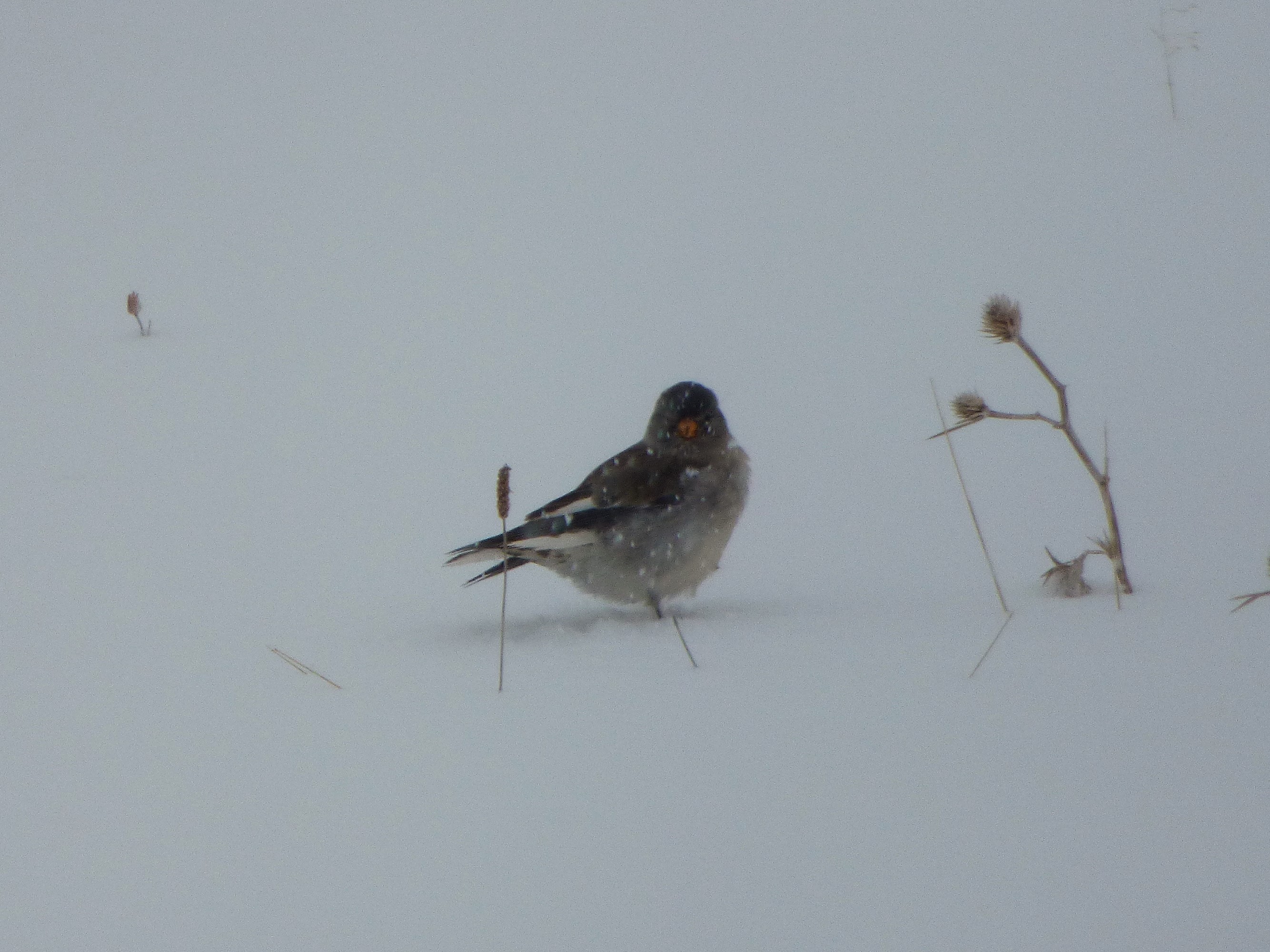
Happy about our success we decided to stop in a coffee shop where we had a rather late lunch. This kind of places sometimes attrack high mountain birds and this time we got a Water Pipit (Anthus spinolleta) and 1 White Wagtail (Motacilla alba), nice combination.
After lunch we head down the valley where weather was better so we decided to explore the fields around the village where were going to sleep. One hour of exploring was enough to get a really nice set of species. We were in La Cerdanya, a lovely Pyrenean valley that is many times concentrating large flocks of finches and buntings.
We just visited an area where birds go to roost and found good number of Yellowhammers (Emberiza citrinella), Tree Sparrows (Passer montanus), Corn Buntings (Emberiza calandra) alongside 35+ Rock Buntings (Emberiza cia), a good number of Cirl Buntings (Emberiza cirlus) and 8+ Bramblings (Fringilla montifringilla). What a wonderful combination of birds! The trees nearby were hosting a small flock of 6 Hawfinches and we also listened the distant call of an Iberian Green Woodpecker…
That was the end of the day and we just drove 10 minutes more until our accommodation, where we had a good rest and an excellent local cuisine dinner.
Day 2. February 14th
Our second day of the trip started with a massive snowfall in all the area around teh Pyrenees. We were actually lucky to leave our accommodation quite early in the morning since weather conditions kept getting worst and worst in La Cerdanya for the next hours and many people were incomunicated and even the village where we were staying was incomunicated for about 1 day!
But when the worst was coming we were already in the road and all roads we were passing by were clear enough to guarantee a fluent, although slow, traffic. This day we were explorig a diferent valley, called Pallars. The area is considered as the best for raptors in the whole Pyrenees, not only for the massive numbers of vultures but also because it hosts a healthy population of Eurasian Black Vultures.
Our first target bird was the famous and wonderful Wallcreeper (Tichodroma muraria). During previous trips this year we were having a bird showing quite well in a gorge about 11:00 to noon so about 11:00 in the morning we were already scanning the rocks. This is a bird that can be really difficult to find so a carefully scanning of the cliff faces is mandatory if you want to keep your changes on the bird high.
While scanning around we got 4-5 Dippers (Cinclus cinclus) singing and moving in the river crossing the gorge. Some tits were also showing well including Long-tailed Tit (Aegithalos caudatus rosaeus), Firecrest (Regulus ignicapilla) and Short-toed Treecreeper (Certhia brachydactyla). Raptors were not moving so much because of the snowfall and only a few Eurasian Griffons (Gyps fulvus) were showing in short views moving along the cliffs. The ambient was really cold (-6ºC) but, fortunately, with no wind. The scanning kept the same until we got a moviment high up in the cliffs. Only a brief glimpse in a bird moving in and out the rocky slope. We all stick together and scanned around but with no feedback for about 2 minutes, and then a wonderful Wallcreeper showed out, and flew down the cliff the emerge not far away from us!
The bird was moving for a while, getting in and out a pair of wholes and finally stopped in a rock, preening for about one minute. After that the bird just flew and crossed the gorge, getting to the opposite site and flying up the slope so we alll lost the bird. It was a really nice view of about a pair of minutes. Excellent.
Happy about this nice views in such a difficult conditions we decided to go to the closer village, get a coffee and scape the bad weather.
In the afternoon, and after a rest of a pair of hours in our accommodation, where we had our packed lunches, we decided to go out and try something else. Weather conditions were improving. No snowfall any more and small patches of blue sky were a good start to think that afternoon could be good for raptors.
So, about 15:00 we arrived around Boumort Game Reserve, where there was «some» activity. And that «some» activity included about 40 to 50 Griffons circling and try to get higher as well as 7 Red Kites (Milvus milvus) in our way up to the area. We parked around and started scanning the cliff faces and all around.
Soon, we found our first adult Lammergeier (Gypaetos barbatus) soaring along cliff Ridge and this bird was immediatly followed by a second adult, and by a juvenile! More and more Griffons were now in the sky and also 2 Eurasian Black Vultures (Aegypius monachus) joined them. Soon, more Blacks were coming from the far side of the cliff and we counted a mínimum of 8 individuals moving around. Mainly juveniles, showing really black but also some adult, with a dulkier coloration and a wing profile not as extremelly squared as the juveniles.

The fields around were having a good moviment of birds including Woodlarks (Lullula arborea) singing out in the surprisingly sunny afternoon, Mistle Trush, European Serins, Cirl Buntings, Rock Sparrows, Sparrowhawk (Accipiter nisus), Linnets (Carduelis cannabina), Eurasian Nuthatch (Sitta europaea), Great Spotted Woodpecker (Dendrocopos major) and a fast-flying Citril Finch (Carduelis citrinella). This bird, a main target of the trip, was unfortunately not stopping at all and only a pair of the participants could notice it and get some details on the bird (larger than Serin, longer tailed and showing a clear wing bar). The bird flew pas us up the valley but it was no chance to follow it since the track was closed due to the snowfall…
Back to the cliffs we could still enjoy more and more vultures, with Lammergeiers passing every whiles and Black Vultures and Griffons circling above us. Small flocks of Red-billed Choughs were also moving around and 1 Golden Eagle (Aquila chrysaetos) and 1 male Hen Harrier (Circus cyaneus) were both a good adding right before we started coming back to our accommodation
Day 3. February 15th
Early morning start, this time to explore some high mountains woodlands before going South to Lleida Steppes! Main quest bird of the morning was Black Woodpecker. Never easy! The original plan was to explore a really wonderful place north in the same shire but, due to the Snowfall, the track was probably block…So, we changed the plan and went to a tarmac lane leading to a sky resort that is was for sure clear.
We arrived there a bit before 10:00 with a cloudy but quiet weather (about 0ºC). The area to explore is about 1700 metres high and much warmer than in the valley due to the typical thermical inversion of the high mountains.
Some birds were moving around and we soon had good views on some Crested Tits (Lophophanes cristatus), Coal Tits (Periparus ater), Short-toed Treecreepers, Goldcrests (Regulus regulus) and one Firecrest. A small flock of Common Crossbills (Loxia curvirostra) were showing well in the top of some pines including a long-staying singing male!
We just kept searching for the main goody up the there and did a pair of walks, still having more small birds moving in the canopies but with no new addings to our list, out of some Mistle Thursh. It was taking a bit long with and the rather boring moment was broken by a Lammergeier soaring extremelly low over the slope in what it was propably the closest view we have had in the whole winter on the bird!
The group was still magnetised by the smart raptor when a clear call of a Black Woodpecker (Dryocopus martius) came up from the slope. The bird was quite close, actually. We stood there for a while and the bird came to us and perched some 50 metres away, high up in a tree so everybody had excellent views on the bird. The bird was still calling a pair of times more and then flew to our left and gave us excellent views on it in flight!
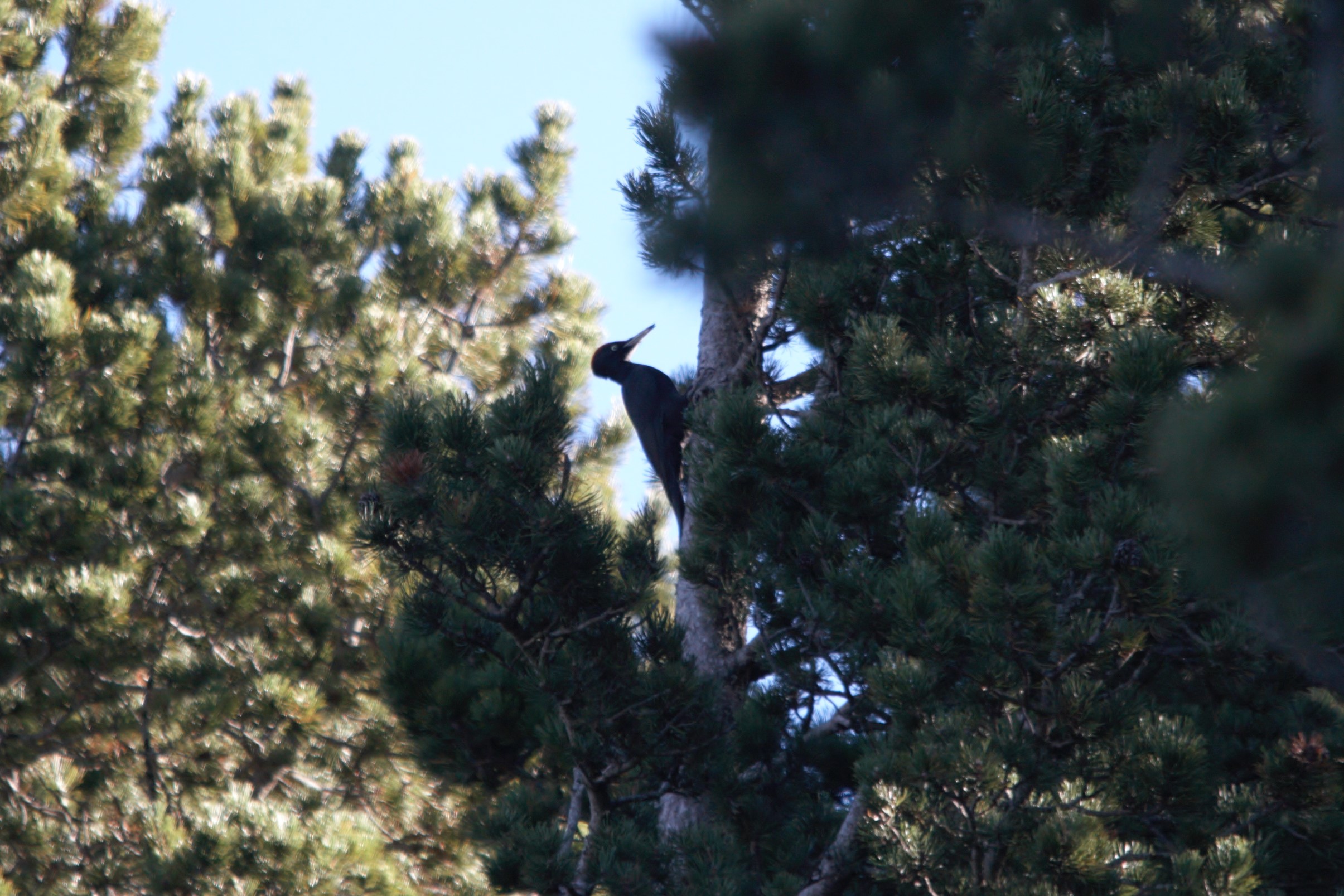
We were all satisfied with such a good views on a bird that is famous for being shy and rather unobtrusive so we started moving South, and explore the plains known as Lleida Steppes and located inmediatly South of the Pyrenees. Less than 90 minutes of drive were enough to produce a massive change in the landscape, and to lead us to our accommodation for the last night of the trip.
Along the way we enjoyed of several Griffons and Red Kites flying around and we had a nice to stop to enjoy the two firsts Iberian Grey Shrike (Lanius meridionalis) of the trip. These birds are endemic of the Iberian Peninsula so they are always a must-see bird!
Iberian Grey Shrike are slightly smaller than Northern Grey Shrikes are, and show less powerful, more compact due to a slightly shorter tail, and clearly darker especially in the undersides, where it shows a pinkish buff which is not always easy no notice. It has also a shorter bill, plainer culmen on it and a thin supercillium if compared with Northern Grey. When flying, looks like smaller bird with smaller white patches in the wing coverts.
Our first movement in the steppes was Utxesa, a wetland surrounded by large reedbeds. Far before stopping the car we were having about 10-12 Marsh Harriers (Circus aeruginosus). Main quest birds here were all living in the reedbeds. The afternoon was a bit chilly but with no wind, something really important when exploring these kind of habitats. It didn’t take long until we listened the firsts calls of Western Penduline Tits (Remiz pendulinus) and Cetti’s Warblers (Cettia cetti) and a proper scanning of the reedbeds and riberside vegetation produced good views on them as well as Sardinian Warblers and several Chiffchaffs. A Cirl Bunting was moving in the crops nearby and it was even singing for a pair of times. A small walk in the area showed extremely productive, and a group of 8-10 Bearded Tits (Panurus biarmicus) showed up in the reeds. A further channel produced 1 Water Pipit (Anthus spinolleta) and 1 male Bluethroat (Luscinia svecica), white medal, running in the mud and showing well in the reeds around! That was one of the main targets of the trip and we really good views on this bird! Here we also had a Green Sandpiper (Tringa ochropus), maybe a overwintering bird or maybe an early migratory bird going back to their nesting sites in Northern Europe.
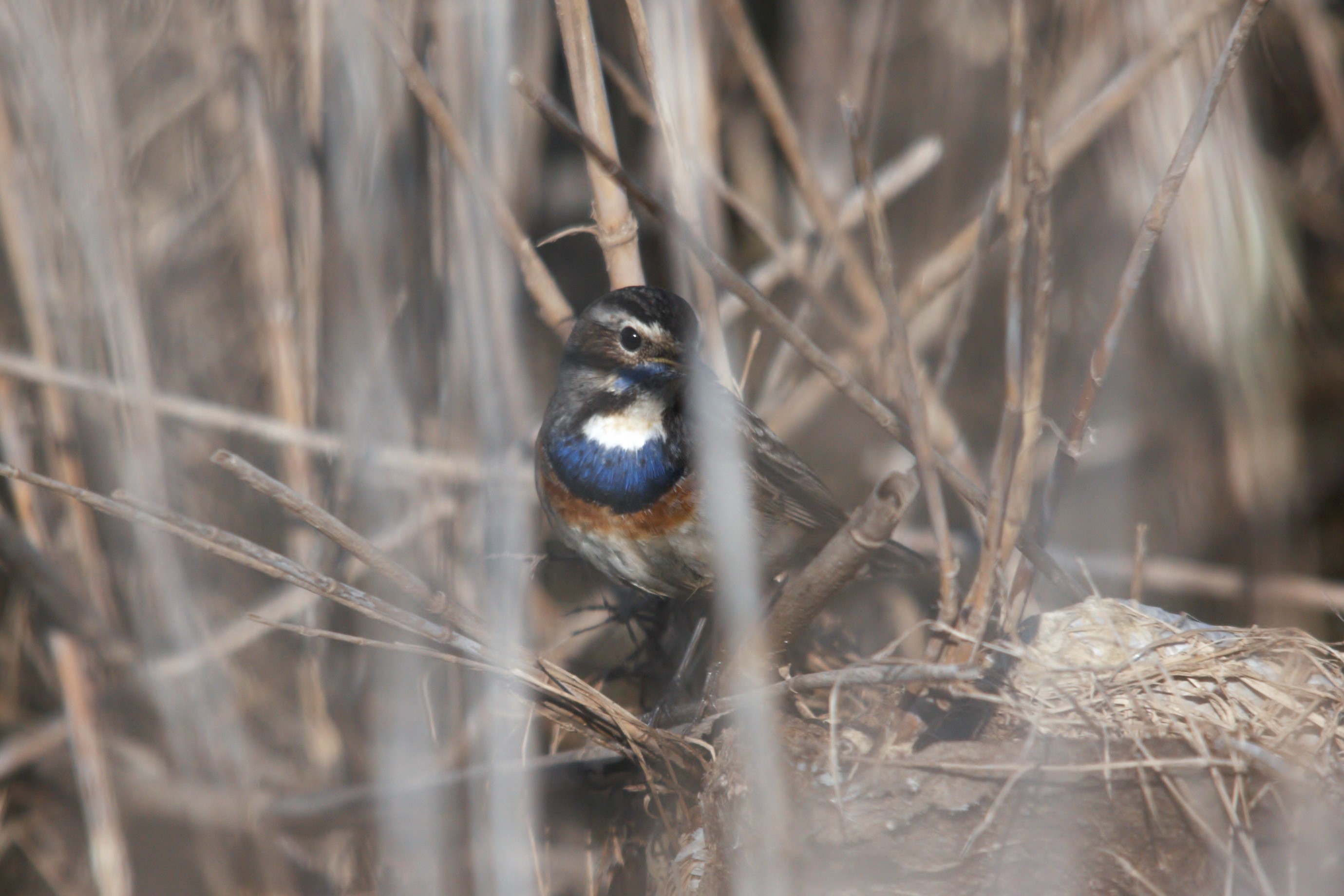

Next movement was to visit a small valley immediatly South of Lleida city. A road stop some kilometers before arriving to the main place was mandatory as we spotted 1 Little Owl (Athene noctua) perched on a tree. We all enjoy with this view and, as being some movement around, we got out the van to have a 5-minutes walk. This produced good views on Crested Larks, 2 lovely Hoopoes (Upupa epops) feeding on ground and 2 Dartford Warblers (Sylvia undata) skilking in the low, sparse vegetation. The only ones of the trip! Few metres beyond, already all back up in the van, we had a second Little Owl really close to the van, producing really good views on the bird!
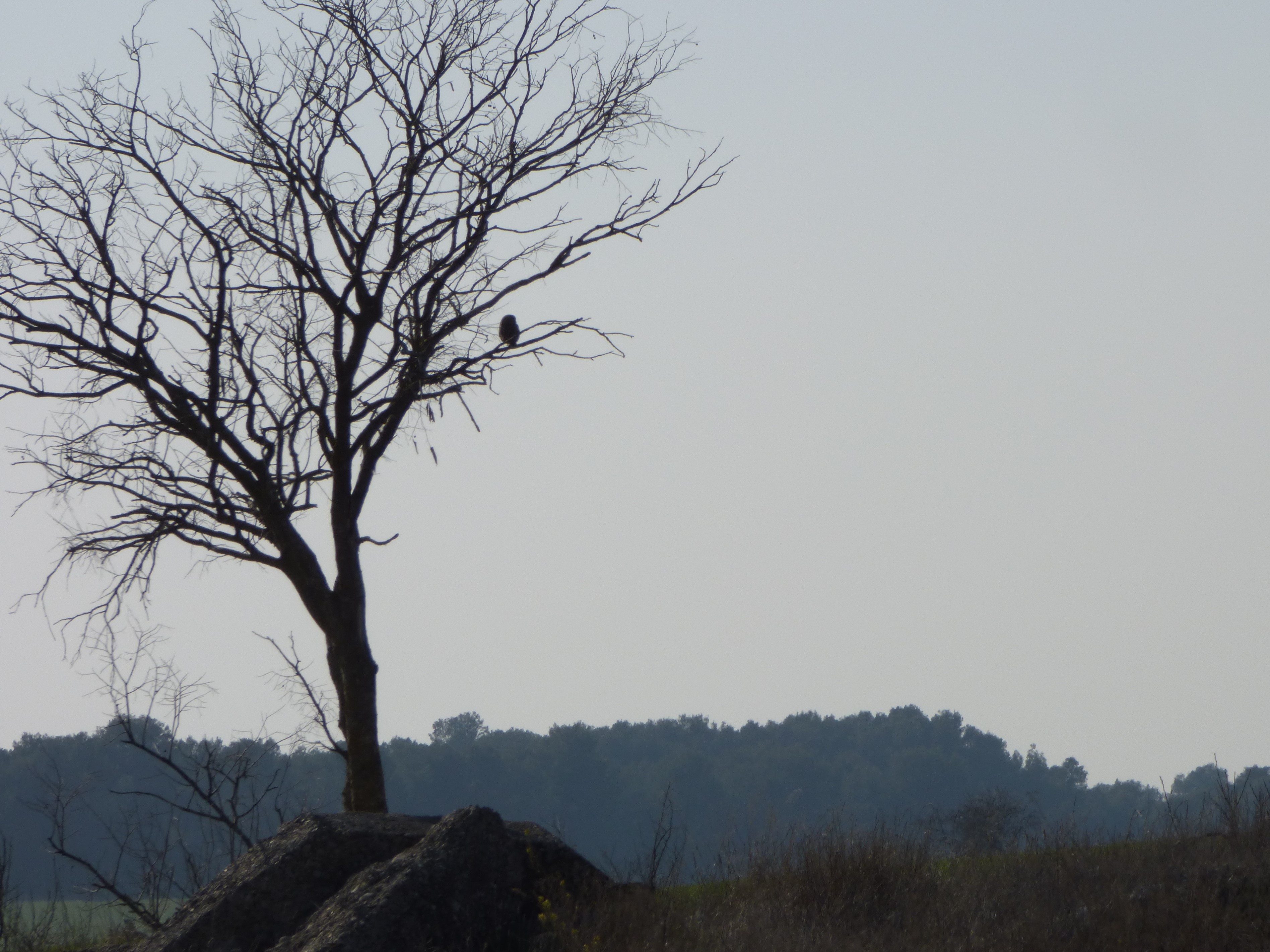
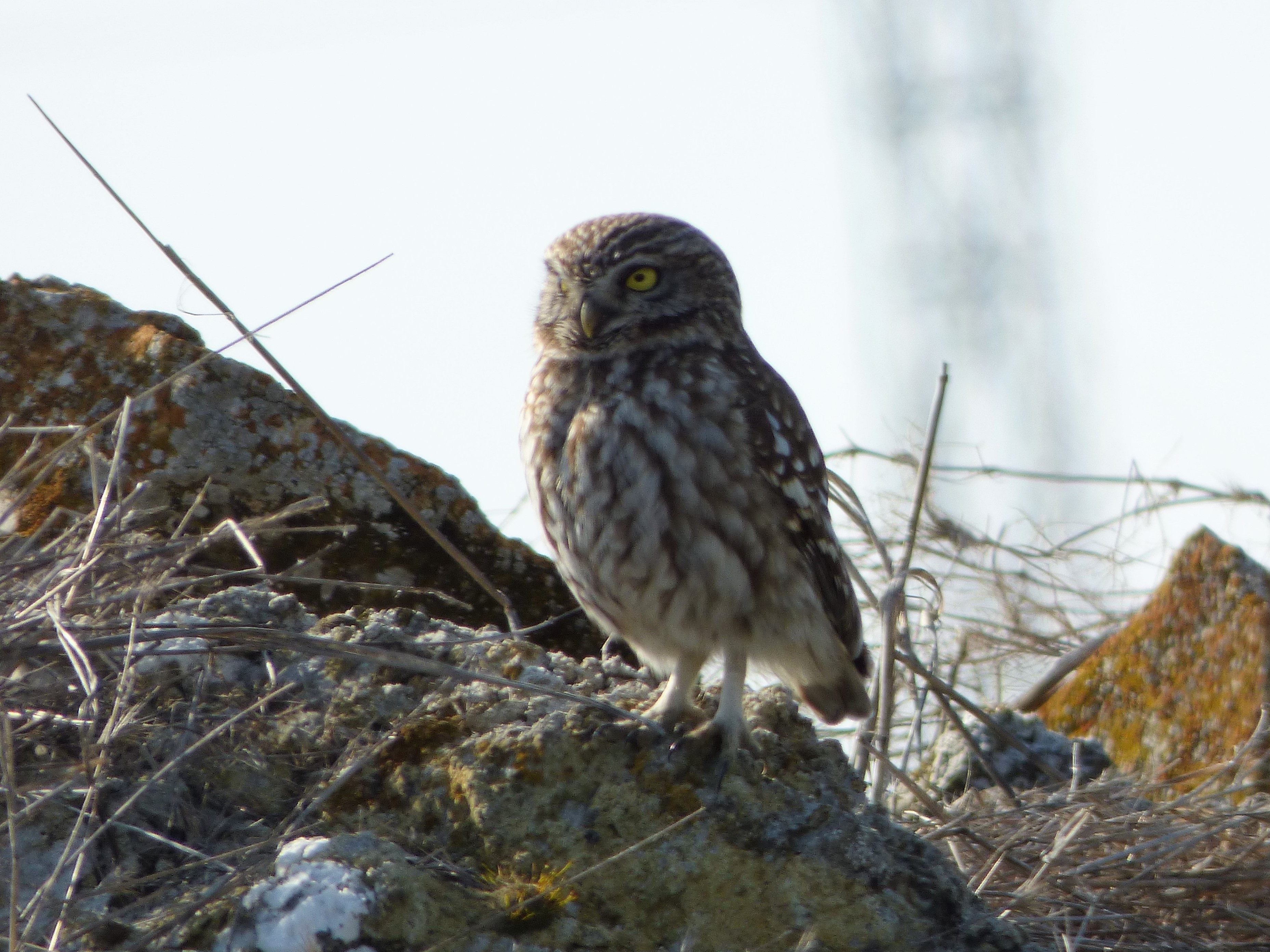
And we arrived to our main stop in the area! We were in a landscape totally diferent was the morning. Landscape South of Lleida is a dry, semi-arid traditional farming with plenty of wheat fields and almond orchards. Here there are almost no water courses and the few streams have some poplars and riberside vegetation while the slopes around are rocky, dry and covered by low, dense scrublands. It was 16:40 and a lovely light was bathing the valley.
Main quest here is a pair of Eagle Owl (Bubo bubo) nesting around in the cliffs. We carefully scanned the cliffs and finally found one adult sleeping deep inside the vegetation. It was a wonderful view despite the poor images we could get on the bird. We all kept an eye on the owl in the case it was moving while enjoying the birdlife around. The slopes around were full of Blackcaps (Sylvia atricapilla) and Song Thrush (Turdus philomelos) but we also got lovely and extremely close views on 8 Hawfinches (Coccothraustes coccothraustes). 2-3 Redwings were also around and a proper scanning in the slopes around was soon producing 2 wonderful Black Wheatears (Oenanthe leucura), again one of the main targets of the trip! The male was quite active and moving up and down in the slope, stopping the same in rocks but also in the top of well exposed branches. So, we were having at the same time Eagle Owl, Black Wheatears and Hawfinches!
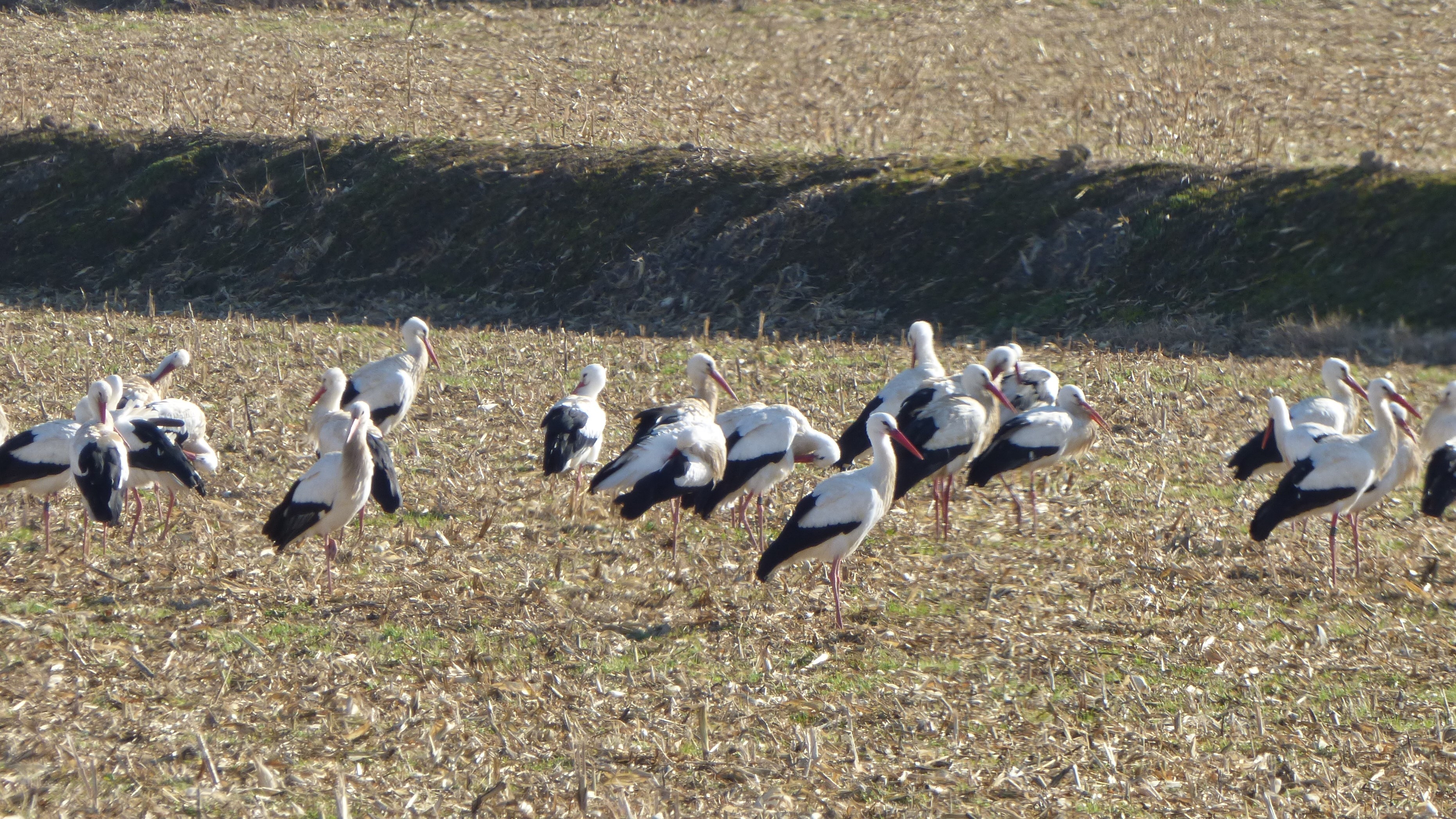
In this place, a tiny stream is going down the valley so we decided to walk down for 400 metres until a crossroad nearby. Midway down, a small pond was attracting tones of Chaffinches and also more Hawfinches were coming down to drink. A short time there, waiting, produced a wonderful male Brambling but also 2 Cirl Buntings coming to drink water. Blue Tits and Long-tailed Tits were also around. Arrived to the crossroad we had the chance to scan at the other side of the valley. Here some Crag Martins (Ptynoprogne rupestris) were patrolling along the cliffs searching for insects and here we also had excellent views on a male Blue Rock Thrush (Monticola solitarius). An Iberian Green Woodpecker was calling around but we could not get any view on the bird. In the nearby village, loads of Spotless Starlings (Sturnus unicolor) were singing and performing, coming down to tha valley and many times stopping in the banks around so we could have really good views on them. Several Jackdaws (Corvus monedula) and 3 Red-billed Choughs were also present. Back to the cliffs, there were still more surprises since in the top of an old house we got 6 Rock Sparrows (Petronia patronia) in lovely light. Around the cliffs some Thekla Larks (Galerida theklae) were singing and callin and we got also good views on the birds. Still surprised how many birdwatchers consider this bird as being really scarce…In Catalonia and the Iberian Med coast is a common bird as long you look for them in the proper habitat: scrubby slopes and steppe lands.

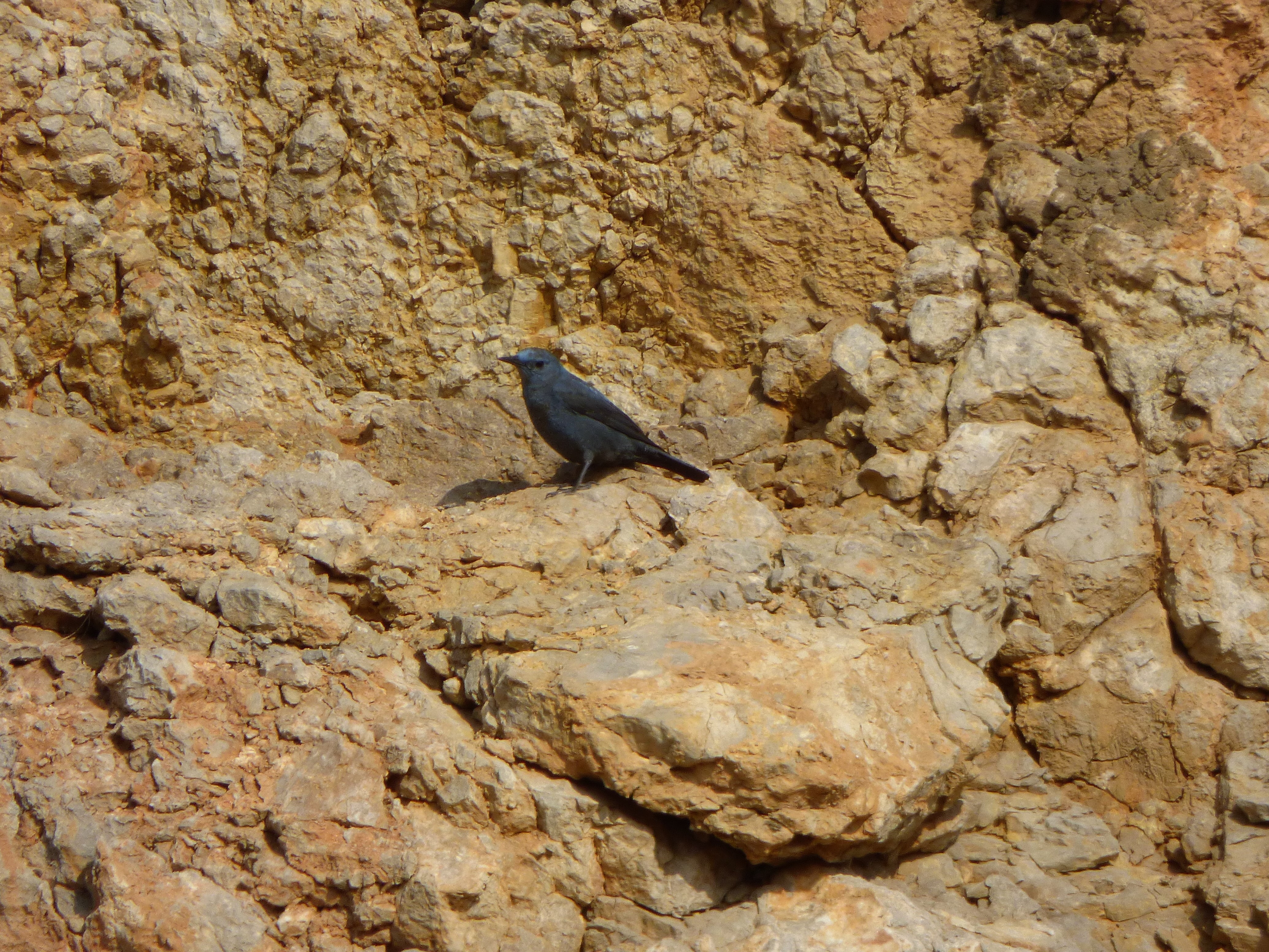
Back to car we still had time to take a look on the Eagle Owl, still roosting in the same place so we just decided to start going to our accommodation…
But we still had time a for 5-minutes stop just before arriving to our accommodation in a farming area, where a flock of Little Bustards (Tetrax tetrax) was spending the winter. It didn’t take long to locate them and we could all enjoy great views on the birds while moving in the well-vegetated fields. The group was counting 37 individuals including males, females and juveniles, easy to tell apart by the design in the upperparts and other details.
A five minutes scan around allowed us to have other interesting birds including several White Storks (Ciconia ciconia) moving around, Grey Herons (Ardea cinerea) as well as a flock of Meadow Pipits (Anthus pratensis) and Eurasian Skylarks (Alauda arvensis). That was the end of a gorgeous day and time enjoy a good dinner and drinks!
Day 4. February 16th
Last morning of the this rather short version of our winter trip (normally it should run for 5 days) and time to explore some amazing spots looking for some top target birds. Early morning breakfast and transfer to the West, getting inside Aragón for some miles to explore a lovely patch of steppes. In our way, the highway was always full of Cattle Egrets (Bubulcus ibis), Red Kites and White Storks.
Arrived to the area to explore about 9:00 we just had a first stop in some fields concentrating Sandgrouses in winter. That morning was a bit quiet but our scanning was still producing a flock of 8 Pin-tailed Sandgrouses (Pterocles alchata) forraging on the ground. We all enjoyed of wonderful views on them and listened the typical «ga-ga» in our left so another flock was moving nearby.
The firsts Calandra Larks (Melanocorypha calandra) were starting singing here and there and soon we had several birds flying around, flying, singing and displaying along with Thekla Larks. We just drove 5 minutes to one of the places where Dupont’s Lark (Chersophilus duponti) is still to be found. All the way, Calandra, Thekla and also some Lesser Short-toed Larks (Calandra rufescens) joined with their songs. It was definately a good moment to go for Dupont’s Lark.
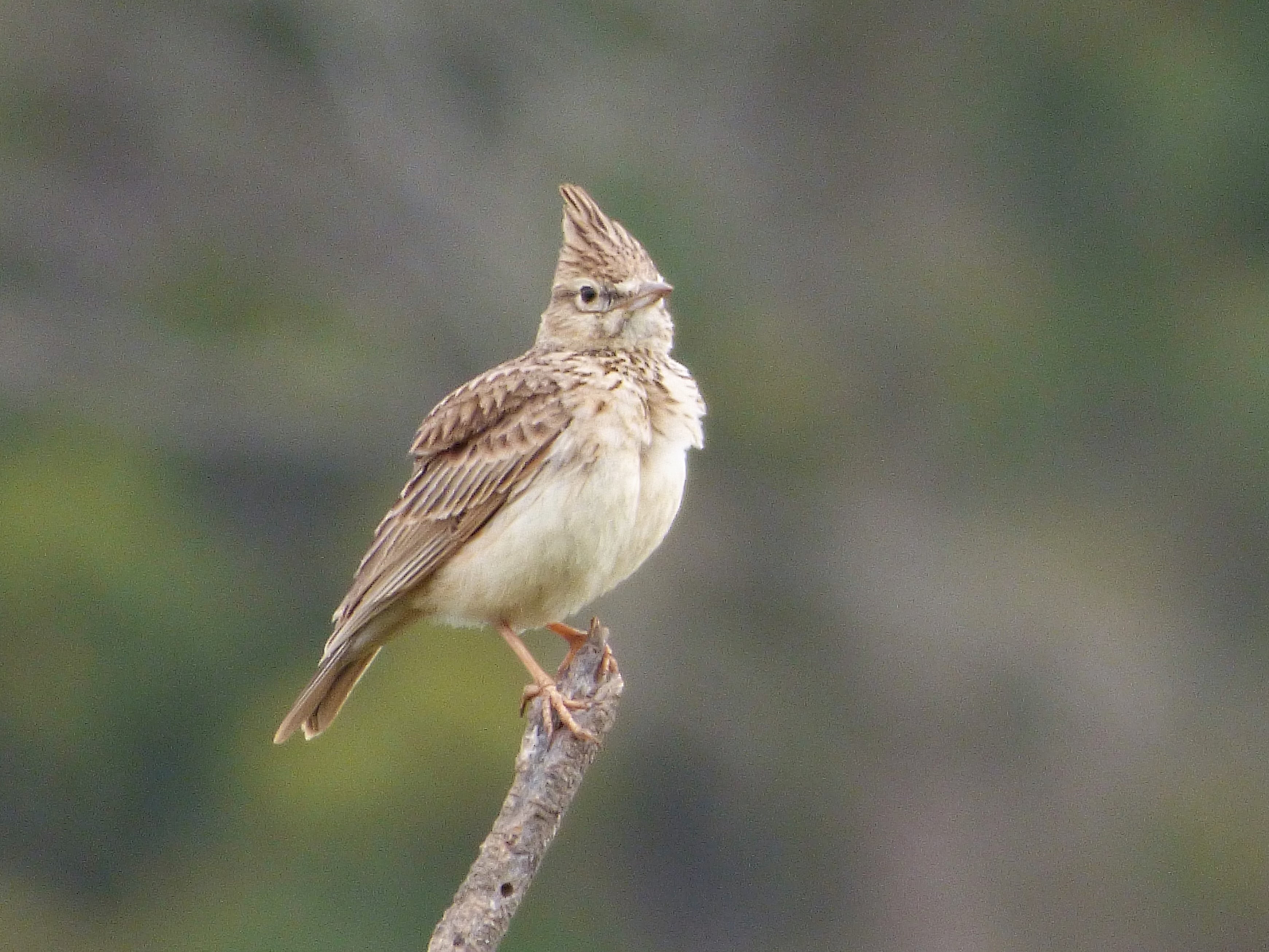
This Lark is a bit a mistery. It is reluctant to fly, and when do it, it normally flies short distances. It calls few times and spend most of its time running on the ground where it looks for insects, warms and spiders. Its rather dark coloration make the bird extremely difficult to find.
So, we drove really slowly, listening for any singing bird. As everything was quite we just arrived to one of the typical places and stop and stay inside the car for some minutes. Nothing singing but Calandra, Theklas and Lesser Short-toeds (not bad, anyway). 2 Black-bellied Sandgrouses (Pterocles orientalis) pass by us but unfortunately nobody in the group noticed the birds. 5-10 minutes and nothing. Scanning all around and nothing. Well, went out of the cars and prepared the scopes. Nothing. Plenty of Calandra singing and a distant, really distant Stone Curlew (Burhinus oedicnemus) calling. We just waited for half an hour, in silence and by the car, and nothing. But then a song came to us. Dunpont’s Lark singing. Difficult to listen because of the massive activity in Calandras and so on but still was there, in somewhere. Some more wait and got two males singing. One at our right, another at our left. Good! Everybody scanning and nothing. 2-3-4 minutes of wait and nothing, only Calandras and Theklas in an endless wave of songs and then a Dunpont’s again at our left, closer. Many times they just sing between run and run, every 2-3 minutes scan really tricky! Again some wait, a really distant bird was singing, as well. More Calandras everywhere and then our Dupont’s started singing really, really close! It looked like being just-in-front-of-us! The bird went on singing of almost one minute, good. And then we found it, standing up quite in the open and singing about 35 metres from us!! What a view!!! Make sure that everybody in the group was having the bird (not easy to find) and try to get some images. Now there were 3-4 males singing but it is always difficult to say due to the Calandra & Thekla songs and, in fact, because the Dunpont’s song itself is designed to make the bird more difficult to spot. We all enjoyed a quite long view on the bird and then the lark was moving in the steppe vegetation so we could track the bird for some metres before it was disappearing…Wonderful!
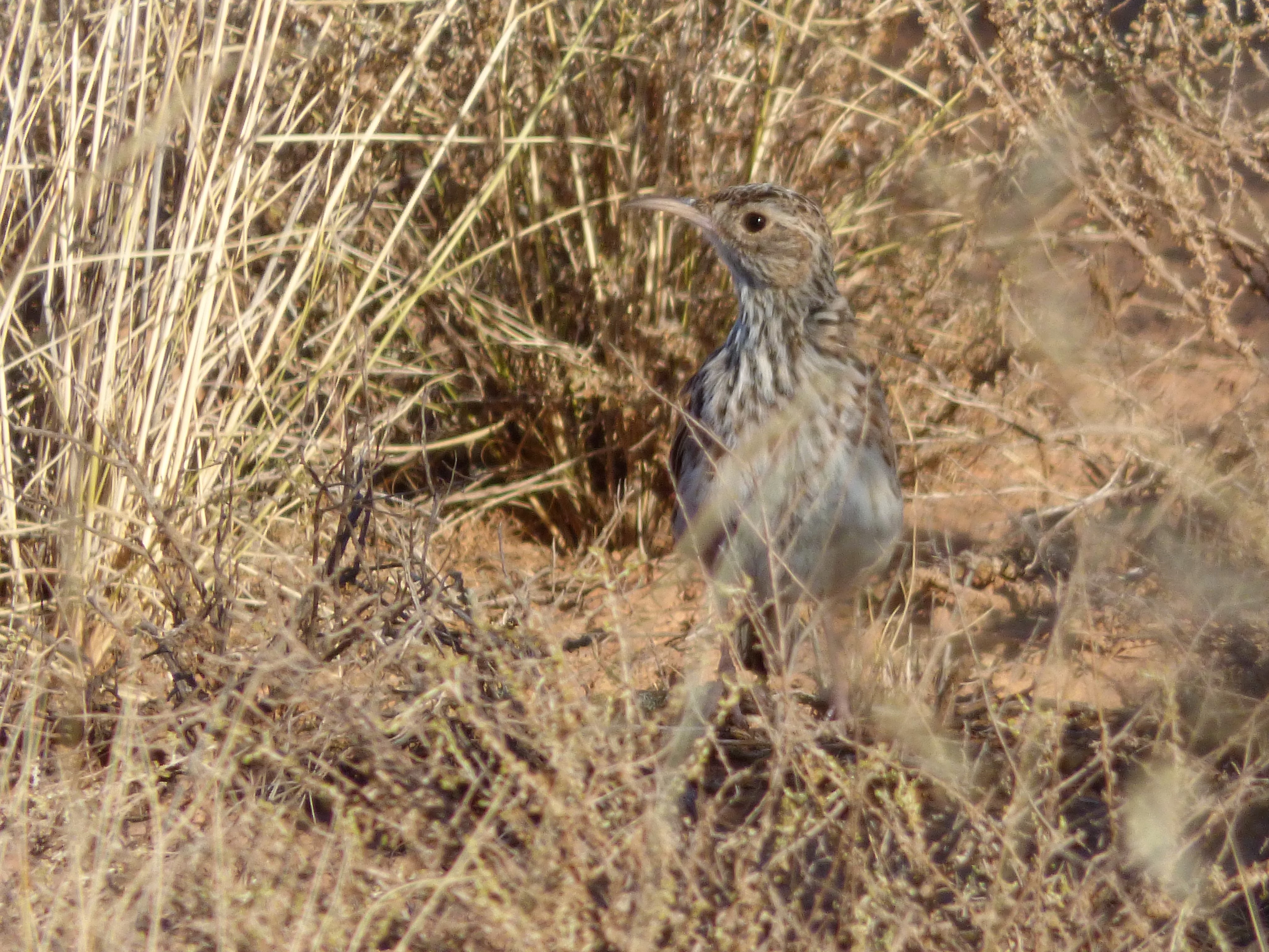
Well, happy all the group for such a successful morning we then invested some time in enjoying good views on Lesser Short-toed Larks and trying to find a flock of Black-bellied Sandgrouse but we had no luck in this second species. We then decided to move to a nearby wetland where have our packed lunches. But before arriving we had a stop in the road, a Marsh Harrier was diving on a juvenile Golden Eagle (Aquila chrysaetos), and attacking it in a really agressive way. We could not figure out was the goldie did to deserve such a treatment but Marsh Harrier was extremely ungry. Maybe starting to defend a nesting territory?
Once in the wetland, inmediatly South of Candasnos, we start having our lunch while scanning the diferent ducks around. Mallards (Anas platyrhynchos) were the most common by far but we also got Gadwalls (Anas strepera), Eurasian Teals (Anas crecca), Northern Shovelers (Anas clypeata) and 8 Common Pochards (Aythya ferina). Still, the best was a flock of 12 Red-crested Pochards (Netta rufina) including some drake ones.
After lunch, a short walk around produced Reed Buntings (Emberiza schoeniclus), 2 Penduline Tits (Remiz pendulinus), and a walk along a channel gave 1 female Bluethroat and 1 Jack Snipe (Lymnocriptes minimus) that flew out and circled us to dive at our back. This was a really nice surprise since is a fairly scarce bird down here! The corn fields around the lagoon where carpeted with Northern Lapwings (Vanellus vanellus) and 1 Merlin (Falco columbarius) came to this area in a really fast Flight when we were scanning around!
Last birding movement of the tour was to drive further West to look for Great Bustards (Otis tarda). A small populations lives in Los Monegros and a proper management is likely to do this population increase number in coming years. Nowadays, less than 80 individuals are left.

So, we just drove around a proper place to find them, always joined by Calandra Larks and huge flocks of Linnets (Carduelis cannabina) and Corn Buntings (Emberiza calandra) and we were lucky to find a flock of 14 males quite easily. It is always wonderful to enjoy such a magnificient birds in the endless farmed plains where do they live. Despite what many people thinks about these gorgeous birds, Great Bustards are not really steppe birds, but grassland birds, and their habitat selection is less exigent than Little Bustards or Pin-tailed Sandgrouses so are (technically) capable to live in a wider range of habitats.
We just ended the trip with the wondeful view of these giant birds in the cereal crops, hoping them the best in their fight for surviving and started coming back to Barcelona, where we arrived a bit after sunset!
A wonderful end for a really successful trip despite the extremely challenging weather conditions…
2019 dates: February 19th to 23rd. Join for great birding and good fun!
Do you want to subscribe to our mailings? Contact us info@barcelonabirdingpoint.com


